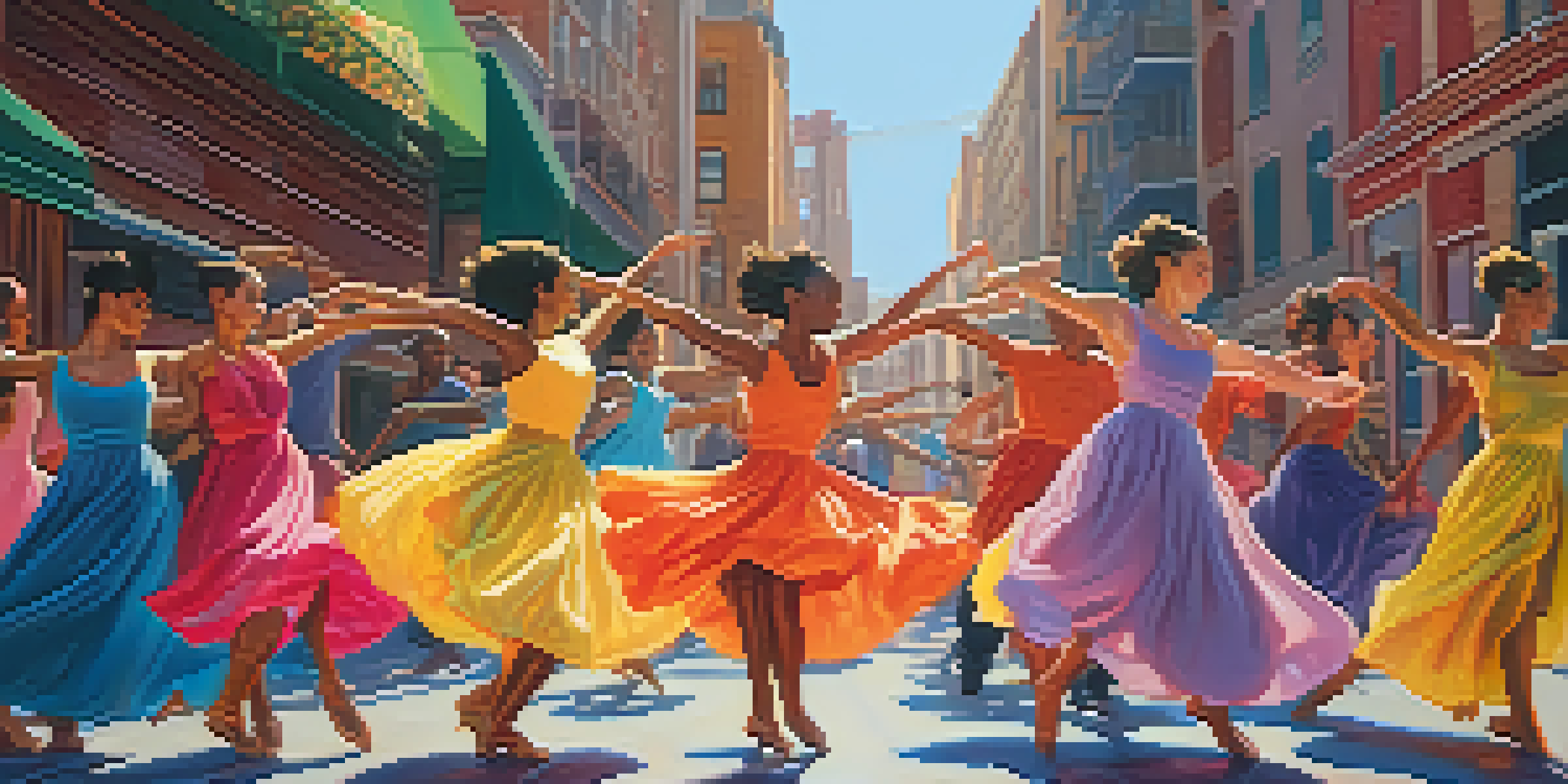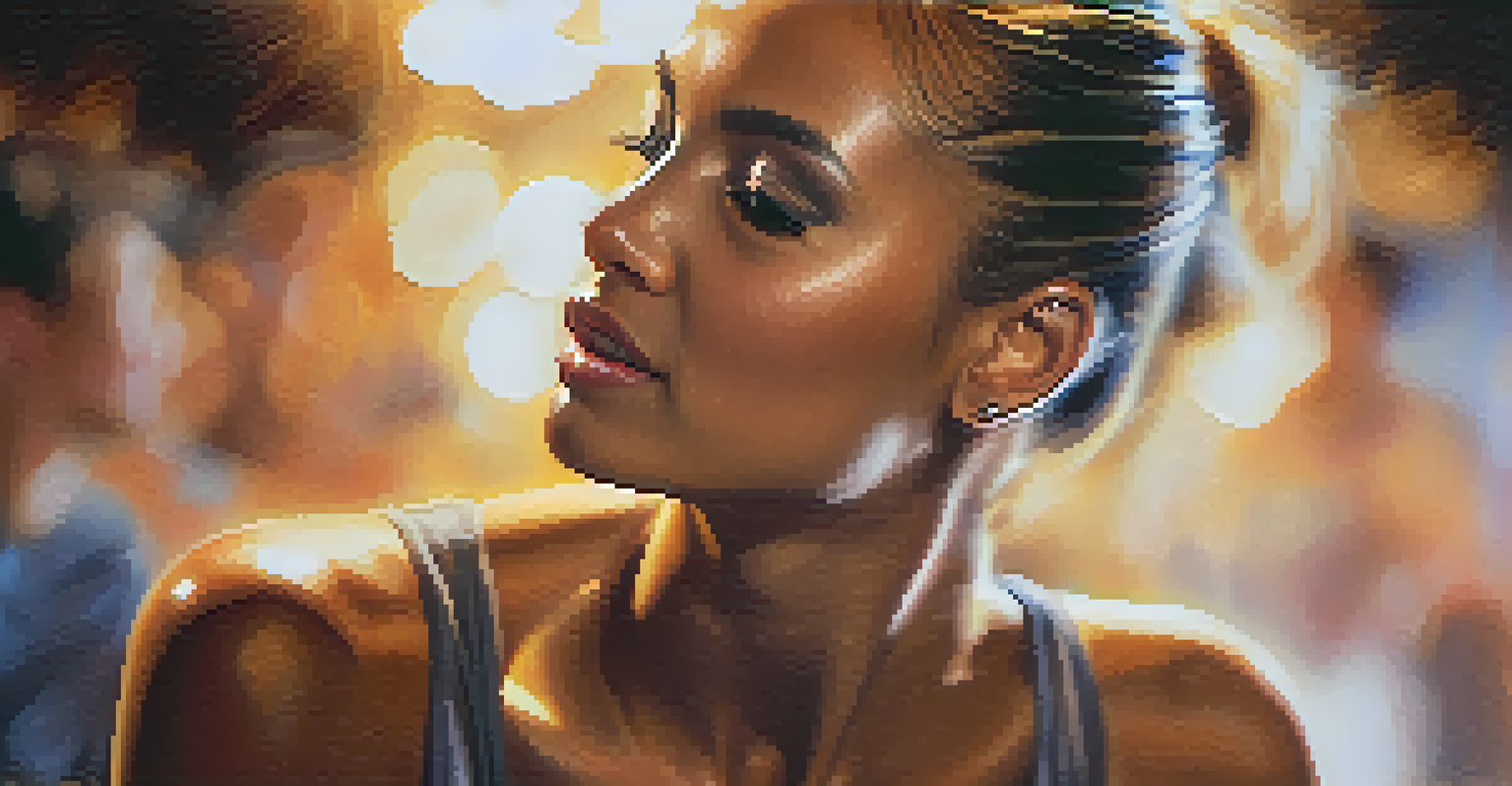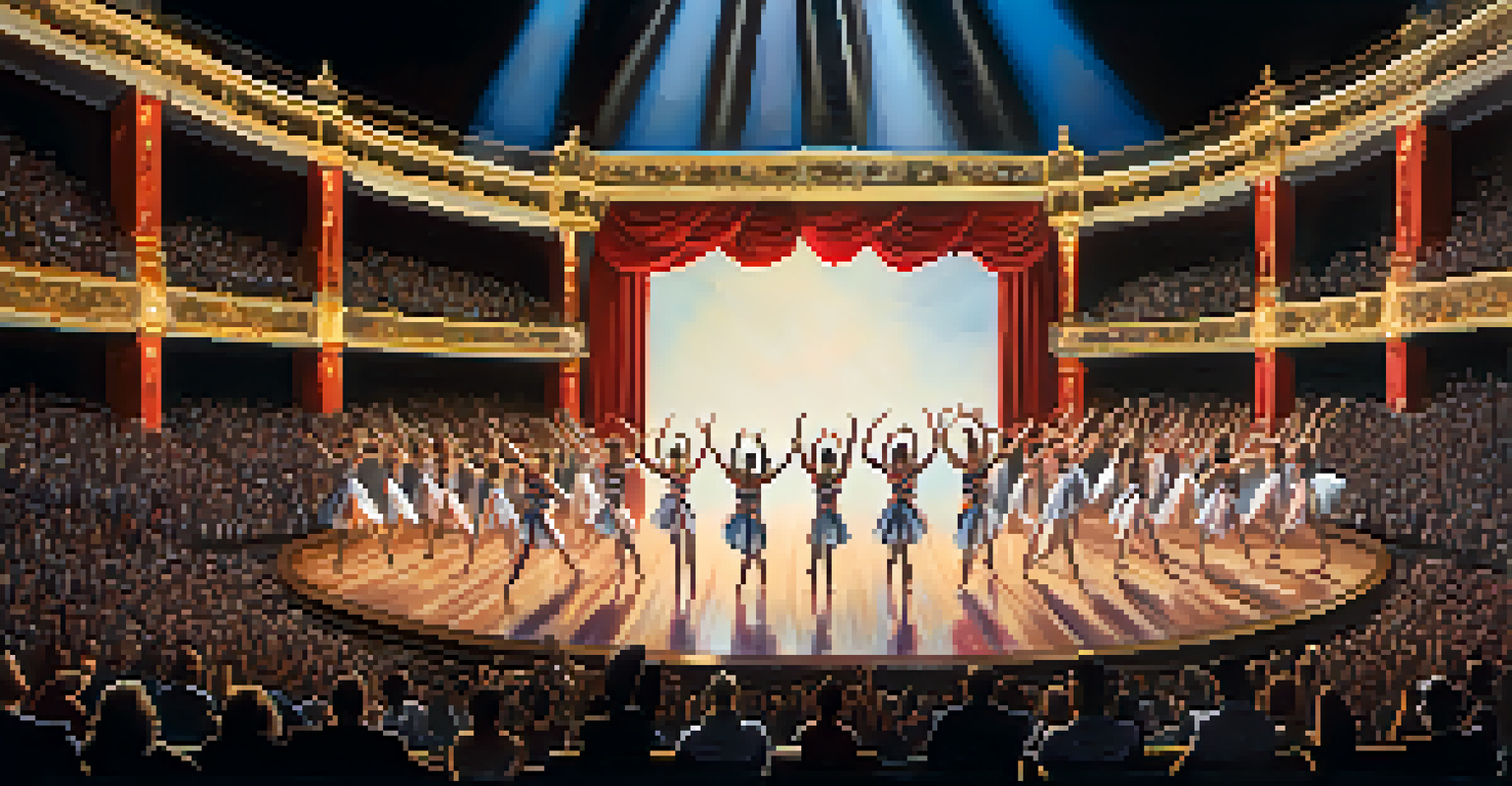Dance Collaborations in Film: Choreography Meets Cinematic Art

The Magic of Dance in Film: An Overview
Dance has an enchanting ability to convey emotions that words sometimes can't. In film, it can transform a simple scene into a breathtaking visual experience, captivating audiences worldwide. Think of iconic moments, like the energetic dance sequences in 'La La Land' or the mesmerizing choreography in 'Black Swan.' Each performance not only tells a story but also connects deeply with the viewer's feelings.
Dance is the hidden language of the soul.
Incorporating dance into film is not just about beautiful movements; it’s about enhancing the narrative. Directors and choreographers collaborate closely to ensure that each dance sequence serves a purpose, whether it’s to build tension, express joy, or demonstrate character development. This creative synergy elevates storytelling to another level, making it an integral part of the cinematic experience.
Therefore, the partnership between dance and film is a celebrated art form that continues to evolve. As filmmakers seek innovative ways to engage their audiences, we can expect to see even more groundbreaking collaborations that push the boundaries of both disciplines.
Iconic Dance Films that Shaped the Genre
Certain films have become landmarks in the dance genre, leaving lasting impressions on audiences and inspiring future creators. Classics like 'Dirty Dancing' and 'Fame' showcased the raw energy of dance and its ability to bring people together. These films not only provided unforgettable performances but also highlighted the struggles and triumphs of their characters.

More recent films, such as 'Step Up' and 'The Greatest Showman,' have continued this tradition by integrating dynamic choreography with compelling storylines. These productions demonstrate how dance can be a powerful tool for storytelling, reflecting cultural shifts and personal journeys. They have also sparked a renewed interest in dance, encouraging new generations to take to the stage.
Dance Enhances Film Storytelling
Incorporating dance into film elevates storytelling by conveying emotions and character development in a visually captivating way.
As we look back at these iconic films, it’s clear that their influence extends beyond the screen. They have shaped the landscape of dance in film and continue to inspire both aspiring dancers and filmmakers alike.
The Role of Choreographers in Film Production
Choreographers are the unsung heroes of dance in film, meticulously crafting each movement to fit the director's vision. They not only design the dance sequences but also work closely with actors to ensure that performances are both authentic and impactful. This collaboration is essential, as it requires a deep understanding of both dance and character development.
In every job that must be done, there is an element of fun. You find the fun, and snap! The job's a game.
Take, for example, the work of renowned choreographer Debbie Allen, who has been instrumental in bringing dance to the forefront of film and television. Her ability to fuse storytelling with choreography has led to memorable performances that resonate with audiences. Choreographers like her play a vital role in shaping the overall aesthetic and emotional tone of a film.
Through their expertise, choreographers help transform the script into a visual feast, using movement to enhance the narrative. This partnership is crucial in creating a cohesive and engaging film that captivates viewers from start to finish.
Cinematic Techniques That Enhance Dance
The magic of dance in film extends beyond choreography; it also involves clever cinematic techniques that bring performances to life. Filmmakers employ various methods, such as camera angles, lighting, and editing, to highlight the beauty and complexity of dance. For instance, a well-timed close-up can capture the emotion in a dancer's face, while sweeping shots can showcase the grandeur of a group performance.
Consider the use of slow motion in dance sequences, which can emphasize the grace and precision of movements. This technique creates a striking visual effect, allowing audiences to appreciate the artistry involved. Similarly, dynamic editing can build excitement and rhythm, mirroring the energy of the choreography itself.
Choreographers Shape Film Aesthetics
Choreographers play a crucial role in film production by designing dance sequences that align with the director's vision and enhance the emotional tone.
By combining these cinematic techniques with dance, filmmakers can create a more immersive experience for viewers. This synergy not only enhances the visual appeal but also deepens the emotional connection to the story being told.
Cultural Influences on Dance in Film
Dance in film often reflects the cultural backgrounds and societal issues of its time. From the jazz-infused movements in 'Chicago' to the hip-hop styles in 'Step Up,' each film showcases the diverse influences that shape dance. These cultural elements not only enrich the choreography but also provide a deeper context for the audience.
For example, Bollywood films have introduced global audiences to traditional Indian dance forms, bridging cultural divides and inspiring appreciation for different art styles. Similarly, films like 'West Side Story' have highlighted the fusion of cultures through dance, illustrating how movement can tell stories of love, conflict, and community.
As filmmakers continue to explore these cultural themes, we can expect to see even more authentic representations of dance that celebrate diversity. This not only enhances the storytelling but also fosters a greater understanding and appreciation of various cultures.
The Future of Dance in Film: Trends to Watch
As technology advances, so does the world of dance in film. The rise of digital platforms has opened new avenues for creators to showcase dance, with short films and online performances gaining popularity. This shift allows for more experimentation and innovation, encouraging choreographers and filmmakers to push the boundaries of traditional storytelling.
Moreover, virtual reality (VR) and augmented reality (AR) are beginning to make their mark in the dance film industry. These technologies offer immersive experiences that allow audiences to engage with dance in ways previously thought impossible. Imagine being able to step into a dance performance or view it from the dancer's perspective—it's an exciting prospect that could redefine how we experience movement on screen.
Cultural Diversity in Dance Films
Dance in film reflects cultural influences, enriching narratives and promoting appreciation for diverse artistic expressions.
As we look to the future, it’s clear that the collaboration between dance and film will continue to evolve. With each new trend, we can anticipate fresh and exciting ways for audiences to connect with this beautiful art form.
Conclusion: The Enduring Power of Dance in Film
In conclusion, the collaboration between dance and film is a dynamic and captivating art form that has stood the test of time. From iconic dance films to innovative choreography, the fusion of these disciplines has created powerful storytelling moments that resonate with audiences globally. The emotional impact of dance, when paired with cinematic techniques, can elevate a film to new heights.
As filmmakers and choreographers continue to work together, we can look forward to seeing how they will reshape the landscape of dance in film. The possibilities are endless, and each collaboration brings the potential for groundbreaking art that inspires and moves us.

Ultimately, the enduring power of dance in film lies in its ability to connect us, transcending language and cultural barriers. It reminds us of the universal language of movement and the profound emotions it can evoke, ensuring that this art form will continue to thrive in the world of cinema.